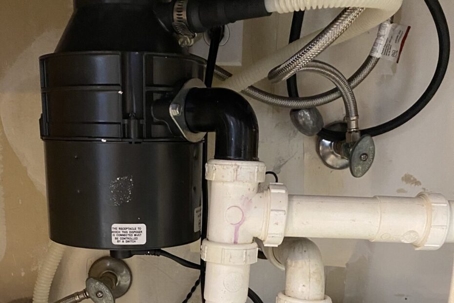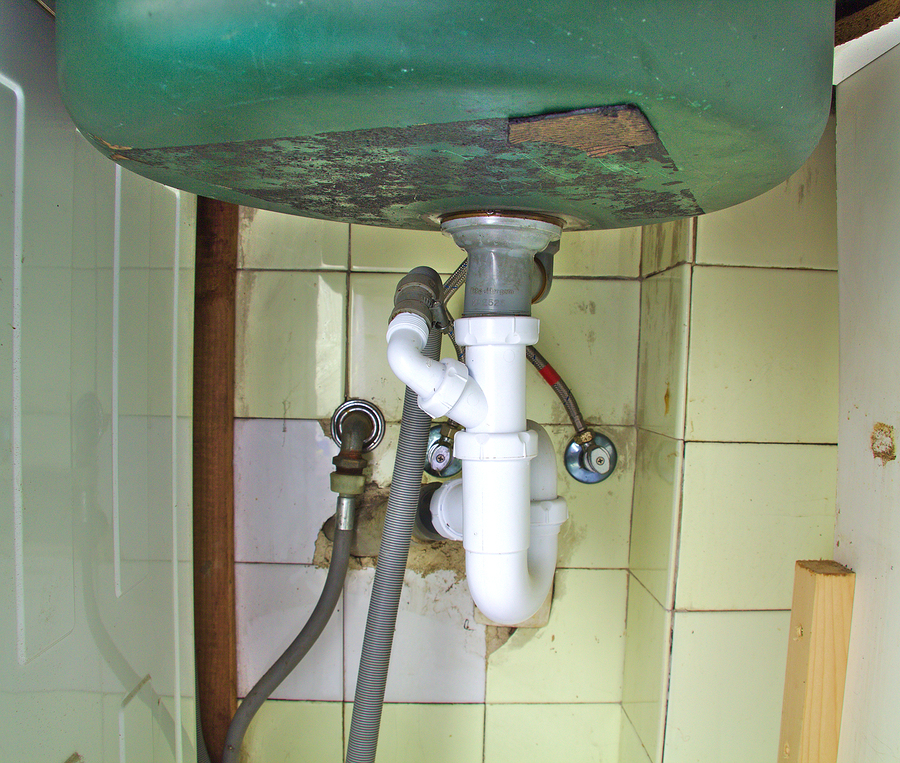Helpful Techniques for Repairing a Dripping Garbage Disposal
Helpful Techniques for Repairing a Dripping Garbage Disposal
Blog Article
Do you find yourself trying to locate answers around Why Is My Garbage Disposal Leaking From the Bottom??

Garbage disposals are necessary kitchen area home appliances that assist in getting rid of food waste effectively. However, a leaking waste disposal unit can be an irritating and untidy trouble to handle. Thankfully, lots of leaks can be fixed easily with a few basic actions. In this write-up, we will talk about exactly how to take care of a leaking garbage disposal properly.
Intro
Garbage disposals are set up under cooking area sinks and are designed to shred food waste into smaller sized items, allowing it to go through the plumbing system easily. While these gadgets are generally trusted, leakages can happen gradually because of damage, loose connections, or damages to the device.
Step-by-Step Overview to Fixing a Dripping Waste Disposal Unit
Switch off the Power
Before trying any fixings, guarantee that the power to the garbage disposal system is shut off to avoid the threat of electrical shock.
Locate the Leakage
Determine the exact area of the leak and establish the reason
Tighten up Connections
Make use of a wrench to tighten any loose connections between the disposal unit and the pipes system.
Change Seals or Gaskets
If the leakage is because of worn seals or gaskets, eliminate the old parts and replace them with new ones.
Patching Cracks or Holes
For fractures or openings in the disposal unit, usage epoxy or a suitable patching material to seal the broken location.
Identifying the Source of the Leak
Prior to attempting to deal with a leaking waste disposal unit, it is essential to identify the source of the leak. This can generally be done with aesthetic examination or by conducting simple tests.
Visual Evaluation
Inspect the garbage disposal unit thoroughly for any type of indications of water leakage. Pay attention to locations around seals, gaskets, and connection points.
Examining for Leakages
One means to check for leaks is by running water with the disposal system and checking for any kind of noticeable indicators of leak.
Usual Root Causes Of Leaks in Waste Disposals
Worn Seals and Gaskets
Seals and gaskets play an essential duty in protecting against water from leaking out of the garbage disposal. Over time, these components can wear away, causing leaks around the disposal unit.
Loose Connections
The links in between the garbage disposal and the plumbing system can end up being loosened gradually, triggering water to leakage out throughout operation.
Fractures or Openings in the Disposal System
Physical damages to the garbage disposal, such as splits or openings in the housing, can additionally cause leakages.
Tools and Products Needed for Taking Care Of a Dripping Garbage Disposal
Prior to beginning the fixing procedure, gather the necessary devices and products, including a screwdriver, flexible wrench, plumber's putty, substitute seals or gaskets, and epoxy or patching material for fixing splits or openings.
Testing the Garbage Disposal After Repair Service
As soon as the fixing is complete, examine the waste disposal unit by running water via it to make sure that the leakage has been settled.
Preventive Maintenance Tips to Prevent Future Leakages
To avoid future leakages, it is necessary to carry out regular maintenance on your garbage disposal. This includes maintaining it clean, avoiding putting non-food products or hard things down the disposal, and occasionally checking for leaks or other problems.
Conclusion
In conclusion, repairing a dripping waste disposal unit is a relatively uncomplicated process that can be completed with standard tools and materials. By following the actions outlined in this write-up and exercising preventative maintenance, you can maintain your waste disposal unit in good working problem and stay clear of pricey repair work in the future.
What to Do About a Leaking Garbage Disposal
A leaking garbage disposal often goes unnoticed until you confront a sopping cabinet, a foul-smelling puddle, or an audible drip-drip-drip from the unit. The fix can be frustrating, too, because the leak can stem from a number of components in the system. Fortunately, with a little sleuthing, you can zero in on the leak and—depending on the exact location—stop the icky oozing and repair the component that caused it. Worst case scenario, if it turns out that the garbage disposal must be replaced, installing a new one is a reasonable do-it-yourself task for those with basic plumbing skills. Read on to keep the cash you’d otherwise hand over to a pro.
Prepare to find the leak
Prior to testing the garbage disposal for leaks, unplug it at the wall outlet and turn off the power from the breaker box to prevent electrical shock. Then insert a watertight sink stopper into your sink drain and wipe the unit dry with a clean cloth. In any handy container, mix a few drops of food coloring into a few cups of water, and pour the dyed water onto the sink stopper to help you locate the leak.
Investigate the source
the top, where the disposal meets the sink drain the side, where the dishwasher hose or main drain pipe connects to the disposal or the bottom of the unit Inspect each of these locations while gliding a light-colored rag over the unit; the dyed water will readily show on the rag and reveal the location of the leak. If a leak isn’t immediately apparent, remove the sink stopper and pour a few more cups of dyed water down the sink drain, then check for leaks again. Leaks near the top of the unit are more likely to show themselves while the sink is plugged, while side and bottom leaks are more noticeable while the sink is unplugged.
The metal sink flange that sits directly inside the sink drain is typically sealed around the top with plumber’s putty (a clay-like sealant) and then secured from under the sink with bolts. If the plumber’s putty deteriorates, or the bolts loosen, the flange can no longer form a watertight seal between the sink drain and the disposal—which could cause a leak at the top of the unit.
To reseal the leaky flange, you must first detach the garbage disposal. Start by loosening the screws securing the main drain pipe to the disposal, then loosen the screws in the metal clamp securing the dishwasher hose to the disposal and detach the drain pipe and dishwasher hose from the disposal. Loosen the screws in the mounting ring that connects the disposal to the metal mounting assembly beneath the sink, then pull down the disposal and carefully set it on a clean, dry surface. Loosen the bolts in the mounting assembly with a wrench, then pull down the mounting assembly and set it near the disposal.

I was shown that report about Why Is through an associate on a different web address. Sharing is caring. You never know, you may just be helping someone out. Thank you for going through it.
Book Appointment Now Report this page